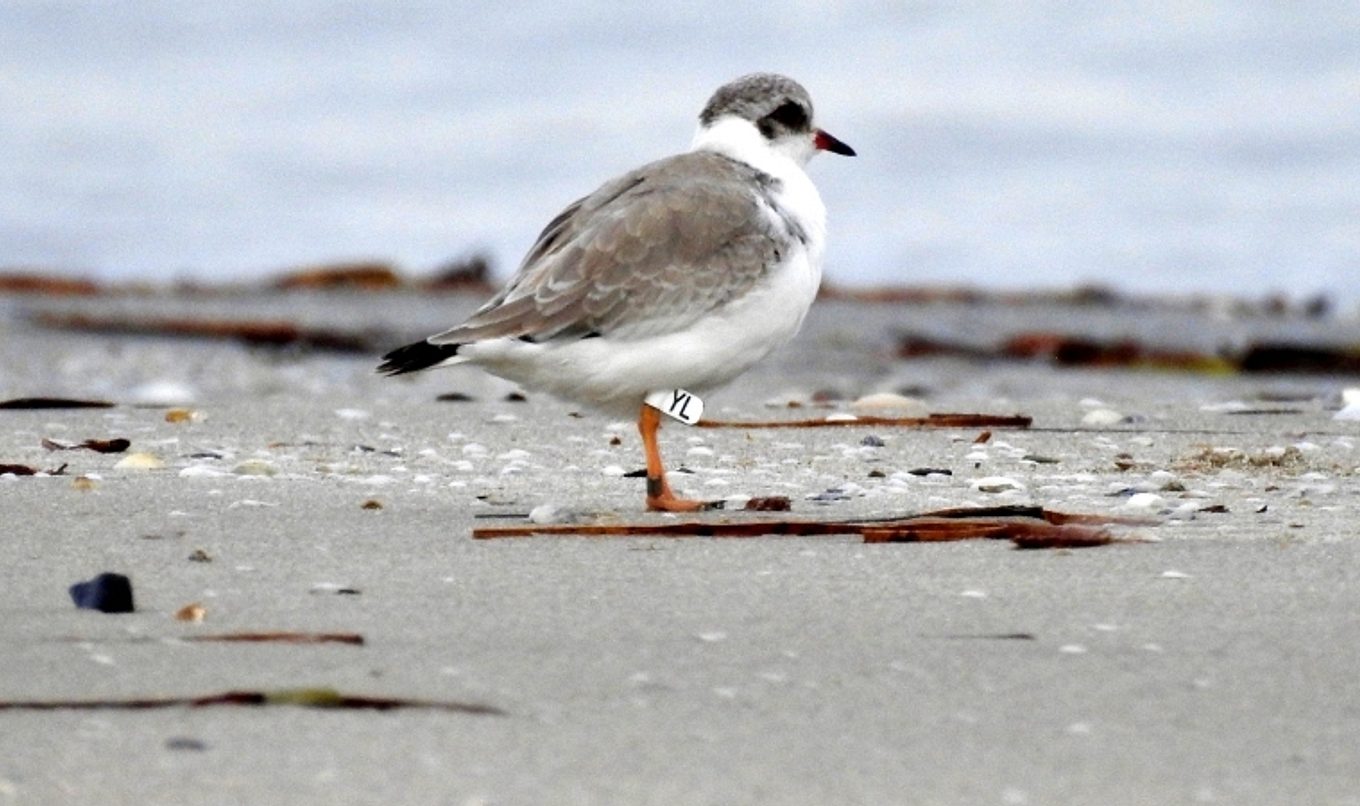Hooded Plover chicks expand their horizons
This season’s Hooded Plover chicks are growing up and hanging out with flocks of adults along our beaches.

One “Hoodie” chick Sandy, who hatched at Seacliff in January, was seen recently with seven other hoodies at Semaphore. Sandy was banded as a chick and is readily identified by a small white leg flag marked YL. Local volunteer Mary-Ann van Trigt snapped pictures of Sandy and another youngster hanging with the “hoods”.
Natural Resources Adelaide and Mt Lofty Ranges (AMLR) Coast and Marine Manager Tony Flaherty said 11 chicks had fledged this season.
“Although the breeding season has ended, people can still see these vulnerable birds out and about,” he said.
“After breeding the birds form feeding flocks around the coast until the next nesting season, which can start as early as August. Then the birds become more territorial and settle into breeding pairs.
“What is clear is that the amazing effort of volunteers, BirdLife Australia and local councils in caring for nest sites is paying off, with hatching success almost doubling at sites where temporary signs and rope fences are put up to encourage leashing of dogs and to stop eggs being crushed.”
The Hooded Plover (Thinornis rubricollis) is a small shorebird with a distinctive red beak, red-ringed eye and striking black hood and throat. Last season’s chicks are still to get their distinctive black hood.
It is listed as vulnerable nationally, with fewer than 800 in South Australia and only 7000 in Australia. The birds make simple nest-scrapes in the sand, and while the eggs and chicks are difficult for predators to spot, they are at great risk of being trampled by beach visitors. Dogs and other animals also pose a threat.
Mr Flaherty said volunteers had recorded 33 active nests on the Fleurieu Peninsula during the recent breeding season, with 11 chicks eventually fledging.
“We now have 27 breeding pairs and we have our fingers crossed for another successful breeding season,” he said.
“Since starting the Fleurieu Hooded Plover conservation work more than 10 years ago, we have seen increasing numbers of chicks hatching and fledging. And while it can still fluctuate from year to year, things are looking hopeful for the recovery of Hoodies locally.
“A number of young birds being spotted are local recruits – that is, fledglings from elsewhere on the Fleurieu that have been banded and have turned up at new locations, such as Hallett Cove and Seacliff.
“In the early years of the program, success mainly came from pairs along the southern coast of the Fleurieu, but now we are getting success from pairs across the Fleurieu and metropolitan area.”
More information about the Hooded Plover project can be found here.
Like what you just read? Stay up to date with all news from the department by subscribing to Environment SA News.

